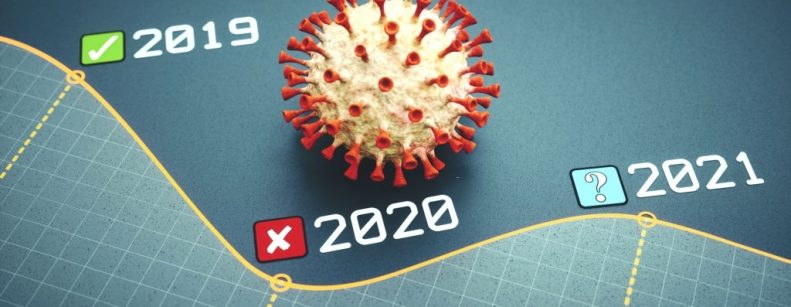
A couple of weeks ago, we wrote about the importance of considering the basis for comparison when analyzing economic figures. We revive this topic, since during these months it will start to become quite relevant and we must be attentive before drawing the wrong conclusions.
In case you were traveling in the Endurance, I will tell you that since the second half of last year, the application of sanitary measures and social distancing caused by the coronavirus pandemic, strongly affected the world economic activity. Locally, we were no exception, causing us to become accustomed to year-on-year falls of more than two digits in the Imacec. But not only the real economy was hit, but also the nominal economy. Significant price drops in the commodities market, particularly oil, caused CPIs to show only marginal rises or even falls. This was in addition to the difficulty (still present) of collecting all the statistical information needed to construct the indices, which was particularly complex in the service sectors.
Thus, during 2020, the world economy contracted by 3.4%, with the US (-3.5%) and the Eurozone (-6.7%) standing out. Locally, Chile observed a drop of 5.8% and, excluding the first quarter (considering that covid-19 took a little longer to arrive), the reduction reached 7.7%. In inflationary terms, prices increased 2.4% in the world (2.9% in 2018 and 2019), with the US registering a rise of 1.2% and the Eurozone 0.3%. In Chile, although the CPI showed an increase of 3.0%, it was heavily influenced by year-end data, affected by pension fund withdrawals and stockouts in some products.
Thus, on the eve of the first figures for the second half of 2021, we sound a note of caution. The mix of increased business and consumer resilience, mixed with the low comparison base, will cause considerable variations in the data to come. Despite the tighter quarantines we experienced during April (well, at least on paper), we project that activity would have increased by about 12% versus April last year. That would be the highest variation in 10 years. For May and June, meanwhile, growth could even exceed 17%. Does this mean that we are in the presence of a boom? No, not yet. In level, with these growth rates, we would only return to what was observed prior to the social crisis of 2019. However, the correct comparison would be versus "what would have happened" without crisis or pandemic. Assuming conservative figures for that scenario, activity levels as of December 2022 would still be 4% below growth that hypothetical growth.
In terms of prices, the analysis is similar. Towards July or August, there is a high probability that the year-on-year variation of the CPI will exceed 4.0%. Does this mean that inflation is out of control? No, it does not. Assuming price increases similar to those typically observed during the rest of the months, inflation should return without much trouble to 3.0% in February or March 2022 or so.
As a final comment, I clarify that these are our baseline scenarios. We could see more or less growth depending on how the health situation and the constituent process progresses, while for inflation we see an upside risk caused by the significant liquidity that households will have in the coming months. But we can talk about that later.
Nathan Pincheira
Chief Economist of Fynsa